The Best Clothing Colors for Asian Skin Tones

Key Takeaways
- Asian skin tones range from porcelain to deep brown with warm, cool and neutral undertones. Identify your individual blend so you can bypass cookie-cutter color tips and select hues that sublimely elevate your features.
- Use your spectrum by region as a guide for mapping your spectrum, not a law – migration and mixed heritage widens the palette. Create your own cheat sheet by recording common undertones – golden, olive, pinkish – among East, Southeast, South, and Central Asian descent.
- Distinguish undertone, overtone, and contrast with daylight, vein and jewelry tests, and a personal chart of skin, hair and eye color. Take pictures of yourself in natural light and record outcomes to optimize clothing, makeup and hair selections.
- Create cohesion with a main palette and accents that compliment undertone. Try swatches against your skin and warm or cool metals for balance before you purchase.
- Select your clothes by undertone for that immediate glow, then play. Mix metals with warm reds and rich browns for warm undertones, jewel tones and cool greys for cool tones and teal and taupe for neutral undertones to see what flatters most.
- Control tricky shades that cause washout or overpowering by balancing them with contrast, neutrals or accents. Let seasonal palettes, coordinated makeup and smart accessories help you feel pulled together and confident for any occasion.
💫 Find My Color Palette
Ready to discover your complete personal color palette? Get personalized recommendations for clothing colors that enhance your unique Asian skin tone, including your specific undertones and contrast level.
Find My Color Palette →Asian skin color palette covers the spectrum of East, Southeast, and South Asian complexions in light ivory to deep espresso. A number of tones exhibit warm or neutral undertones, from the olive hues common in East and Southeast Asia, to those more golden to rich brown shades prevalent in South Asia.
To select complementary shades, consider undertone, depth and surface tone. Coming up, fast ways to identify undertones, shade examples and shade-matching tips.
📚 Recent Articles
Beyond the monolith
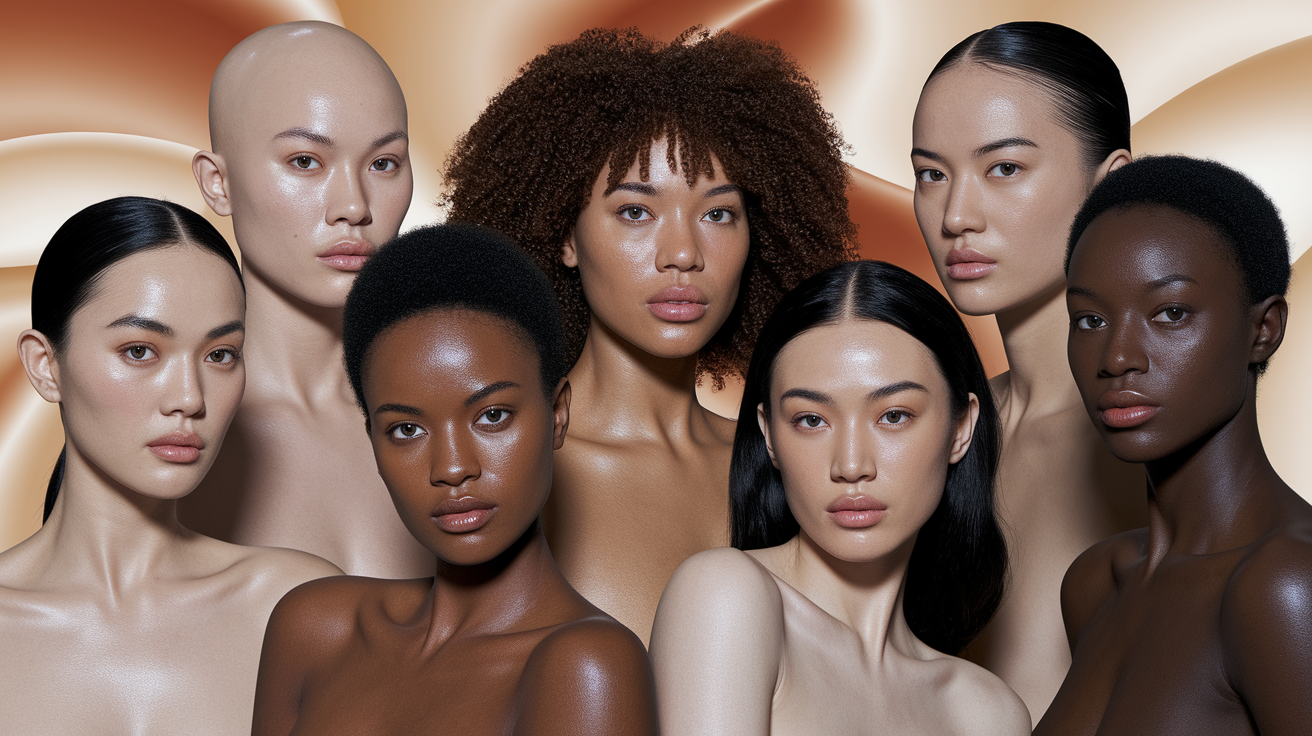
Asian skin is not monolithic. It runs porcelain to olive to honey to deep brown, each with its own undertone. Knowing that range helps you sidestep generic advice and zero in on better color matches for your clothes, makeup, and hair.
Diversity in Asia and among diasporas around the world, even Asian Americans, illustrates why nuance counts.
The spectrum
porcelain, light, light–medium, medium, tan, deep tan, brown, deep brown
Each tone has undertones—warm (gold, peach), cool (pink, red, blue) or neutral (a mixture). Undertones guide pair more than profundity. Cool deep might rock jewel tones, warm light might glow in soft apricot.
East Asian examples: porcelain with cool pink; light–medium with olive; medium with neutral beige. Southeast Asian examples: tan with golden; medium with olive; deep tan with red-brown. South Asian examples: medium with olive; brown with warm gold; deep brown with cool blue-red. Central Asian examples: light–medium olive; beige with warm yellow; golden brown with neutral.
Capturing this spread is critical for your analysis. It details why a single "Asian-friendly" palette lets down so many, and why test swatches, not labels, result in the most flattering selections.
The geography
| Region | Typical depth range | Common undertones | Notes |
|---|---|---|---|
| East Asia | Porcelain–beige | Cool pink, olive, neutral | Varies by sun, altitude |
| Southeast Asia | Medium–deep tan | Warm gold, olive, red-brown | Sun-rich climates |
| South Asia | Tan–espresso | Olive, warm gold, cool red | Broad genetic mix |
| Central Asia | Olive–golden brown | Neutral, warm yellow | Steppe, mountain links |
Build your own map: list region, write likely depth, test undertone with white paper, gold vs silver, and fabric drapes, then note best color families.
Immigration and biracial diversity broaden the scope. Asian Americans in the U.S.—Chinese, Filipino, Indian, Vietnamese, Korean, Japanese, and more—represent more than 150 years of diverse arrivals, from the railroad-era Chinese workers to Southeast Asian refugees in the wake of Vietnam and the Khmer Rouge.
These identities overlap (Asian and LGBTQ+, Asian and a woman), and history, such as the Japanese American internment, informs how they perceive and express themselves. Language, religion and place change style necessities, showing the community isn't a monolith.
The culture
Beauty ideals in Asia have sung the praises of both fair and sun-kissed at different points in time, leading palettes to lean towards either bright cools or warm earths.
Traditional dress–hanbok pastels, sari jewel tones, kebaya brights, ao dai whites and reds, chapan greens–often harmonizes with local undertones, which is why those colors seem "right" on so many wearers.
Habits such as daily SPF, shade-seeking or herbal care may alter visible tone over seasons. So continue experimenting instead of cementing a palette year-round.
Honor taste not bias. Wear whatever makes you feel like yourself.
Find your asian skin color palette
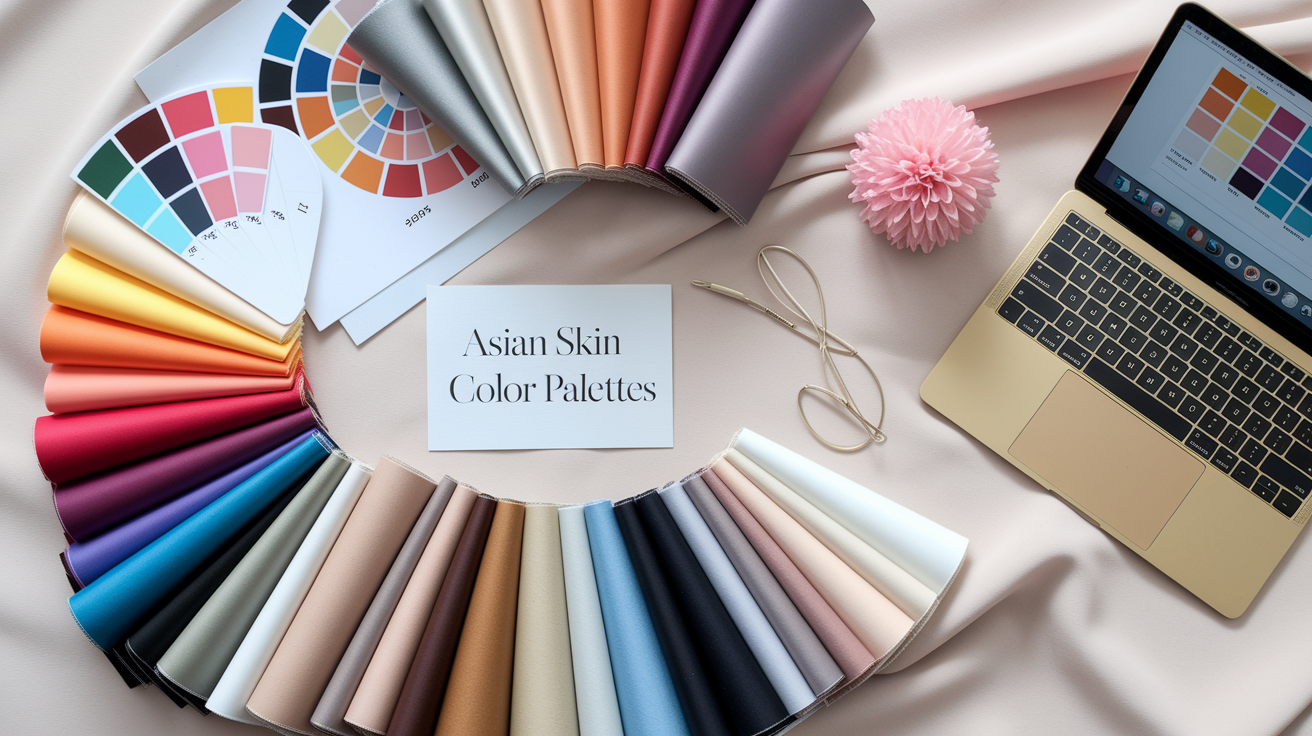
Asian skin colors range from light to deep with warm, cool, or neutral undertones and can frequently exhibit golden, olive, or pink nuances that vary from other ethnic groups. True color selections require a systematic check of undertone, overtone and contrast, then a condensed palette of core and accent color.
Use daylight, photos and online colour analysis to double-check and record selections for clothes, hair and makeup.
1. Identify undertone
To determine your skin tone, check the veins at your wrist in daylight: a greenish hue suggests a warm skin tone, while bluish or purple indicates a cool tone, and a mix leans neutral. Additionally, observe how gold versus silver jewelry complements your bare skin—if gold illuminates your complexion, you likely have warm undertones, while silver suggests a cool tone. If both types of jewelry work, you may fall into the neutral category. This color analysis can be particularly useful for selecting flattering colors in your wardrobe, especially for those with tan Asian skin tones.
Next, observe how your skin reacts to sunlight and various colors. Warm undertones typically tan to a golden brown, while cool undertones might burn red at first. Many individuals with Asian skin tones exhibit golden or olive undertones, some with pinkish beige, and others balanced. For a more accurate assessment, stand by a window at noon, as indoor lighting can distort your true colors. Make a note of your classification—warm, cool, or neutral—and keep it in mind when selecting makeup, hair dye, and Asian clothes.
Finally, ensure you jot down your findings. This will aid in identifying your personal color palette, which is essential for making informed choices when shopping for vibrant shades or pastel colors. Remember that understanding your skin type and how it interacts with different colors is crucial for achieving your unique color palette. This knowledge not only enhances your appearance but also boosts your confidence when choosing clothing and accessories.
2. Determine overtone
Overtone is the top appearance of your skin at this moment. It can be lighter or darker than your undertone. Compare cheeks and jaw to clear standards in natural light: beige, tan, caramel, or espresso. If you spot mid-depth warmth with olive, record it! If you notice light beige with pink, remember it.
Overtone combines with undertone to define your palette. A warm-golden undertone with a tan overtone could adore rich corals, rust and teal. A cool-pink undertone with light beige overtone might prefer dusty rose, slate and navy.
Snap a picture by your window, no flash, simple background. Photos assist in seasonal transitions.
3. Consider contrast
Rate the contrast among skin, hair, and eyes. Dark hair with light skin is high contrast. Mid-brown hair with tan-beige skin and dark eyes is medium. Soft black hair with deep espresso skin can be low if values are close.
Make a quick chart: skin depth, hair depth, eye depth. Seeing them next to each other sharpens the contrast. High contrast befits brazen duos like cobalt, crisp white and inky black. Low contrast appears sophisticated in such gentle mixtures as sage, mauve, camel and latte.
Medium contrast bridges both with balanced picks. This directs prints, jacket-to-top worth distinctions, eyeliner depth and lip intensity.
4. Create harmony
Develop around undertone and overtone initially. For warm-golden or olive, go for core colors like camel, warm taupe and soft navy; accents like terracotta, marigold and teal. Cool or pinkish for core colors – charcoal, cool navy, oyster, with accents like berry, pale mint and slate blue.
Group picks:
- Core colors (daily neutrals): Desert Sand (#F0C2AA), Dutch White (#F0D3C0), soft navy.
- Accent colors (pop pieces): Pale Pink (#F9DED7), Baby Pink (#ECC9BD), Pastel Pink (#E8B3A2), teal, rust.
- Seasonal colors (rotating): spring corals, autumn olive, winter burgundy.
Don't clash undertones—cool ash lipstick on warm-golden skin can appear flat. Swatch fabrics and makeup on bare skin in daylight — keep what brightens eyes and evens tone.
Utilize online color quizzes and virtual try-ons to narrow down options, they're super useful for the vast spectrum of Asian skin tones and their distinct undertones.
Best clothing colors for asian skin tone
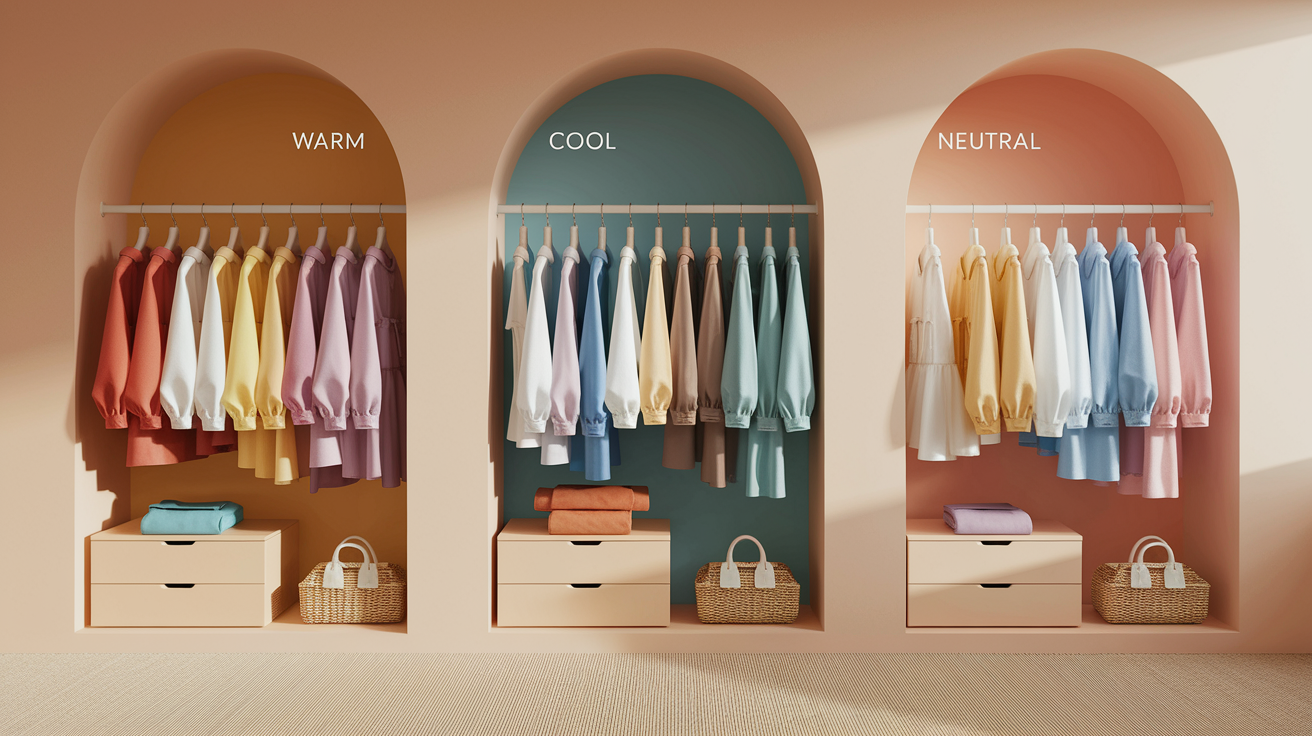
The right color can make skin look radiant and vibrant while the wrong one can wash it out. Begin with undertone—warm, cool or neutral—since Asian skin falls across the spectrum. Donning undertone-echoing colors adds glow, sharpens features, and enhances style with minimal effort.
Play with these palettes, combine 2 or 3 at a time, and construct ensembles that feel confident and simple.
- Warm undertones: tomato red, burnt orange, mustard, olive, camel, chocolate, terracotta, warm white, gold
- Cool undertones: sapphire, emerald, amethyst, cobalt, icy pink, lavender, cool grey, crisp white, silver
- Neutral undertones: teal, dusty pink, soft mauve, taupe, cream, beige, muted earth tones, navy, mixed metals
Warm undertones
| Color family | Specific picks | Why it works | Try with |
|---|---|---|---|
| Warm reds | tomato, brick | echo golden undertone | dark denim, tan leather |
| Mustard yellow | ochre, saffron | boosts warmth | olive chinos |
| Rich browns | caramel, chestnut | earthy depth | cream knit |
| Earth tones | terracotta, rust | natural harmony | linen |
| Warm metals | gold, bronze | adds glow | hoops, belts |
Warm reds, mustard yellow and rich browns are flattering because most Asian skin tones have yellow or golden undertones. Earthy hues—browns, beiges and yellows—complement tan skin, providing sun-kissed depth without shine.
Gold and bronze accessories frame the face and make complexions look fresh. Avoid icy pastels and blue-leaning shades which can diminish warmth. Cool mint, icy lilac and steel blue often read flat next to golden skin.
Cool undertones
Jewel tones—sapphire blue, emerald green, and amethyst purple—bring clear contrast that brightens cool skin. Crisp whites and cool greys keep lines clean and modern. Grey functions as a quiet anchor that grounds a look.
Icy pastels such as powder blue and lavender can sing if the fabric has some weight. Silver and platinum jewelry suits the undertone and maintains the cohesiveness of the palette. Avert heavy mustard, tomato red and other yellow-based shades which can clash and sallow skin.
For deeper cool tones, lean into saturated brights, deep jewel tones, and even warm metallics used sparingly. The bold hit comes lifts features without hijacking attention.
Neutral undertones
Teal, dusty pink, soft mauve and taupe land in the magic zone—not too warm, not too cool. Cream, beige and muted earth tones are dependable bases that layer well all year round. Navy, grey, white, black, pink, burgundy and olive continue to be classic for men's wardrobes.
Mix warm and cool in one outfit: teal shirt, taupe trousers, silver watch, camel shoes. Try gold and silver, whichever brightens your face in the daylight. Black is a safe power move for Asian men, giving edge and ease.
Pastels are dicey on tan skin, but go for the deeper pastels—dusty rose or smoked mint.
Colors to approach with care
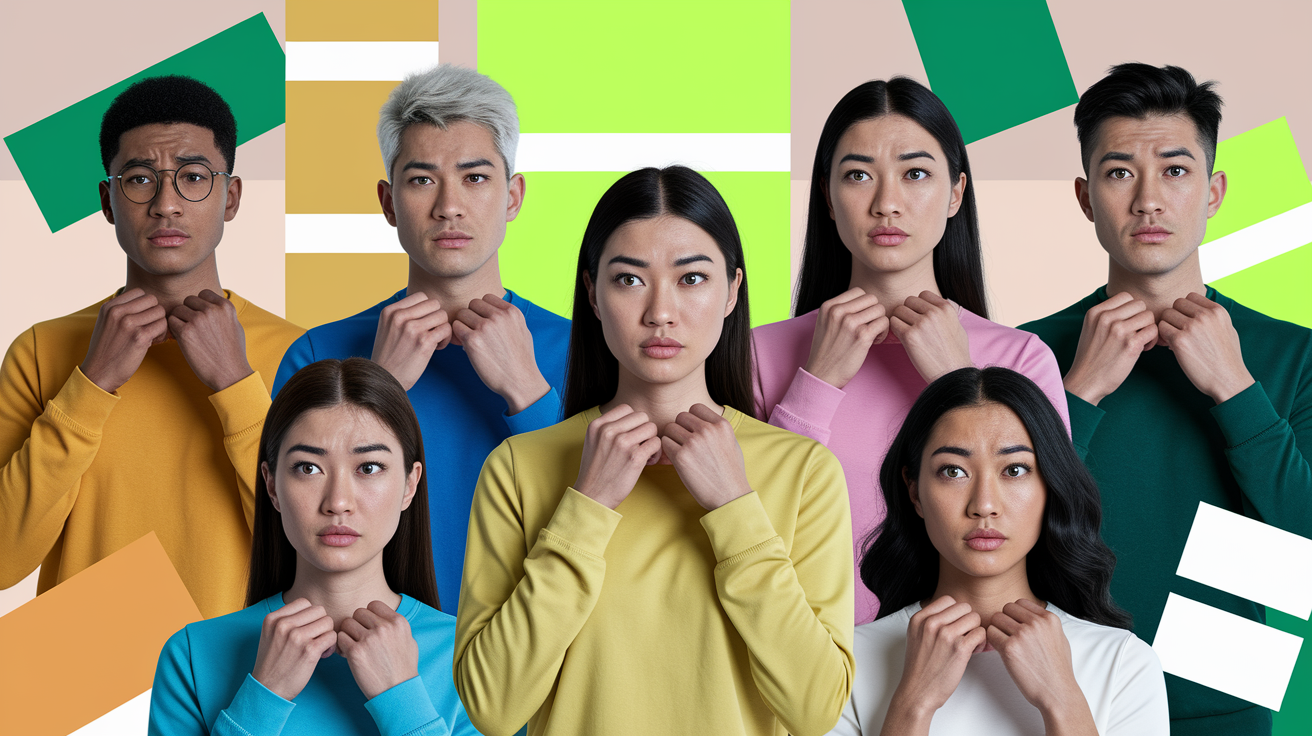
Asian skin encompasses a variety of warm, cool, and neutral tones, including tan skin tones and many shades of olive, making it essential to recognize that one rulebook seldom applies. Traditional color systems, often centered around Caucasian skin, overlook these nuances, particularly those olive tones that transition with depth and light. To accurately assess your unique color palette, measure your skin against others in daylight—vein and wrist tests can be misleading.
Challenging colors include pastel yellow, powder pink, and icy lavender, which may risk washout or overpowering effects. Adjustments can be made by shifting temperature or adding texture. Personal color analysis is crucial, as many Asians have olive skin that may appear yellow, pink, or green under different lighting, emphasizing the need for tailored color analysis services.
The washout effect
Washout occurs when a color causes skin to appear dull, pale, or ashy. This effect can happen quickly with undertone mismatches: cool pastel colors on warm skin tones or dusty beiges on deep tones. Olive skin, which is notorious for flipping between green, yellow, or pink casts, can render a 'safe' beige one day flat the next. Understanding your personal color palette is crucial to avoid such mismatches.
Colors to watch include pale yellow, pastel pink, powder blue, bluish lavender, and some beiges or greiges with heavy gray. Fair olive skin with warm lean can look sallow in cool pastels, while deeper olive can appear gray in dusty taupes. These rare combinations, like dark olive with cool undertones or fair olive with warm undertones, behave in unusual ways, making color analysis essential.
Experiment with reforms, not prohibitions. Team a perilous pastel with statement accessories—charcoal belt, espresso bag or bronze earrings—to bring back the contrast. Layer a crisp off-white shirt beneath a pastel sweater, or toss on a deep navy blazer over a light dress. Texture helps as well; rib knit, raw silk or tweed add a dimension that flat cotton cannot.
Use beauty shifts to stabilize the style. Just a swoosh of soft berry lip or a rich brown liner can pep up a drained face. Hair with warm lowlights or neutral chocolate shatters the 'gray veil'. Even minor moves, like a whisper of bronzer with olive undertones, can ground spring's lighter tops, enhancing your flattering colors.
The overpowering hue
Super bright or neon colors can overwhelm natural tones and emphasize redness or sallowness. Bright orange, hot pink and cobalt blue tend to photograph first, skin second. On cool-leaning yellow skin (yes, that happens), neon orange can push greens. On warm medium skin, electric blue can come off sharp and icy.
Use these hues as accents: a scarf, trim on sneakers, a logo tee under a dark jacket. Ground the body of the outfit in hues—ink navy, warm camel, charcoal, olive drab, deep plum. Shift from neon to saturated but softer cousins: coral instead of neon orange, fuchsia instead of neon pink, royal or cobalt instead of electric blue. Matte fabrics mute glare; high-shine synthetics intensify it.
Styling beyond the rules
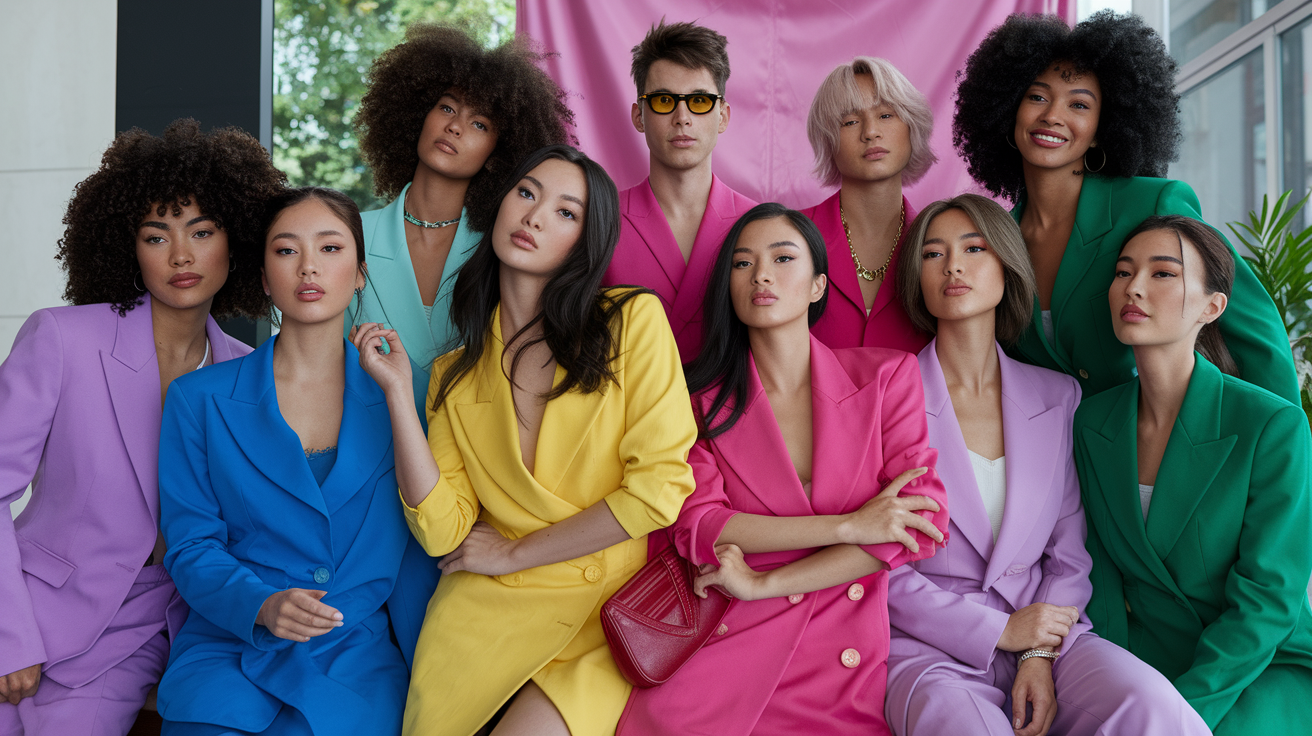
Style flourishes when you experiment with borders. Asian skin tones range from fair to deep with warm, cool, and neutral undertones; hence rigid rules tend to fall short. Know your undertone, style the rest.
Experiment with unconventional duos—teal and rust, lilac and olive, cocoa and blush. Shift silhouettes, too: a sleek monochrome base with one oversized layer. Earthy colors—olive green, burnt orange, mustard—seem to look best on light brown skin.
Deep hues such as forest green, chocolate brown, and mustard are stunning on dark hair and eyes. Pastels can wash out tan skin, but soft mauve or dusty blue might sing on lighter, cooler undertones. Metallics inject some sparkle; just keep the shine in one spot for emphasis.
Seasonal palettes
Seasonal takes colors and divides them into spring, summer, fall, and winter. It provides a definitive guide to modifying trends to undertones prevalent in Asian skin, ranging from golden warmth to cool olive.
Tune the palette to your skin's feedback. Warm/golden undertones frequently read as Spring (clear, warm brights) or Autumn (rich, muted warmth). Cool undertones tend to lie in Summer (soft, cool, gray-cast) or Winter (deep, high-contrast, cool).
If rules fail you—common with olive or neutral undertones—blend sets: Autumn olives with Winter burgundy, or Summer dusty rose with Spring coral.
Seasonally refresh your closet. In warm months, attempt soft summer colors—powder blue, cool pink, sage. Transition to luxurious fall hues as light transforms—copper, moss, toffee. Keep a small rail ready: 6–8 core hues that match the light outside.
Construct a fast visual graph. Pin swatches of your top seasonal colors on a board or your phone album. Add descriptions such as "best for work," "great with gold," "pairs with navy.
Makeup synergy
Makeup should reflect undertone so skin appears vibrant. Pick a foundation that matches your neck, not just your face. Warm: peach or terracotta blush. Cool: rose or berry. Neutral: soft apricot.
Try lip shades by tone:
- Fair cool: raspberry, cool red, mauve.
- Fair warm: peachy nude, warm coral.
- Medium warm/light brown: burnt orange, brick red, spiced nude.
- Tan/olive: terracotta, fig, warm plum.
- Deep: cocoa, merlot, cherry.
Match with outfits. A forest-green dress meets cinnamon blush and chestnut lip. An icy-blue blouse adores a cool pink lip & taupe eye. Go bold for night—metallic lid or lacquered red—then maintain one focus.
Accessorizing wisely
Choose metals that complement undertone. Gold warms olive, golden skin. Silver gleams off cool tones. Mixed metal aids neutrals.
Employ scarves, hats, and bags as accent hits. A mustard bag elevates a navy ensemble. A teal scarf jolts a gray coat to life.
Play with finish: matte knit, glossy patent shoe, subtle metallic earring. One metal statement is plenty.
Build a small capsule: gold hoops, silver studs, a jade pendant, camel belt, black and mustard bags, cream scarf, onyx watch. It makes it easy to keep looks cohesive.
A modern palette for men

A modern palette for men fuses all-season neutrals with seasonal perennial values. For Asian men, you begin with skin tone and undertone — light to dark, with warm, cool or neutral undertones. That blend changes the way colors read on the face. When shades sync with your undertone, skin looks clear and lively; when they fight it, skin can seem dull.
Fit and contrast count. Sharp lines, clean seams, and the right amount of light–dark contrast near the face provide a cool, modern aesthetic.
Address the unique needs of Asian men in color analysis and personal styling.
Think in layers: skin, hair, eyes, then body shape. Skin undertone guides the base palette, while hair depth determines contrast. Generally speaking, a dark-haired, medium-skinned guy can easily pull off mid-to-deep colors, while a lighter-haired, light-skinned fellow requires softer, lighter tones around the face to prevent harsh lines.
Body shape directs where to locate light and dark—lighter shades attract attention, darker fade back. Knowing your body shape and color palette creates a stylish, confident look with no additional effort.
Recommend clothing colors, hair shades, and accessory options tailored to common Asian male skin tones.
Warm undertones: olive, tan, or golden-beige skin tends to glow in earthy hues—olive, camel, rust, warm navy, and cream. The Light Spring palette—soft, warm tones such as light coral, peach, mint, and warm stone—can give an added suntanned vibe.
Cool undertones: pink-beige or ash tones like cool navy, charcoal, burgundy, pine, and crisp white work well. Neutral undertones can flex both ways—think muted teal, taupe, and soft gray. Hair shades should echo the undertone: warm espresso or chestnut for warm skin; ash brown or blue-black for cool skin.
Accessories—brushed gold or bronze for warm; steel or matte silver for cool. Tortoise frames for warm, slate or black for cool.
Suggest practical color combinations for work, casual, and formal occasions.
Work: navy suit, light blue shirt, and warm brown belt and shoes for warm skin. Charcoal suit, white shirt, black belt, and shoes for cool.
Casual: olive chinos with cream knit for warm. Slate jeans with heather gray tee for cool. During warmer months, lighter colors like cream compliment a lot of men, particularly with warm undertones.
Formal: midnight tux with black bow tie flatters most. Warm undertones can swap to off-white shirt; cool undertones stick to bright white. A contemporary palette tends to blend neutrals and pops of color that flow throughout seasons.
Highlight the importance of color contrast and fit for a confident, modern look.
Match contrast to your features: high-contrast faces need stronger light–dark pairs, while low-contrast faces need softer steps between shades. Keep fits clean: shoulders right, sleeves at the wrist bone, hem near mid-fly for shirts.
Sporting hues that complement your skin tone accents the entire silhouette. A few guys like lighter colors in spring/summer—select airy materials and stay away from complicated palettes.
A man's palette is a combination of skin hue, hair coloring, and personal preference—sample, jot down compliments, and go forward.
Conclusion
So to sum it up, skin has span. Asian skin color palette ranges from warm gold, cool olive, deep brown and others. A broad blend. Bold color selections assist. Soft sage, teal, cream, sand and wine look sharp on a lot. Rich blue pops on warm skin! Dusty rose compliments cool olive. Deep plum adores deeper shades. Little switches get you a long way. Swap stark white for cream. Experiment with navy or forest instead of black. Try gold and silver by daylight.
Fashion matures with exercise. Use a small test: a scarf, a tee, a lip tint. Notice what illuminates your face. Maintain a brief but effective list.
Have a win or a miss you learned from? Post your 'in-the-holes' shades or fits. Include your notes so others can give them a go as well.
Frequently Asked Questions
What does "Beyond the monolith" mean for Asian skin tones?
Asian skin color palettes encompass warm, cool, and neutral undertones, highlighting the importance of color analysis training. Skip generic advice and focus on your unique color palette, calibrating by your style and lighting.
How do I find my Asian skin color palette?
Check your undertone by examining your veins and conducting a jewelry test, while considering how your skin reacts to the sun. Match your tan skin tone to undertones—warm with earthy shades or cool with vibrant jewel tones, and explore flattering colors that suit your unique color palette. Always try it on in sunlight for the best color analysis.
What clothing colors flatter most Asian skin tones?
Rich jewel tones such as emerald, sapphire, and ruby complement tan skin tones beautifully, while earthy shades like terracotta and olive are among the best colors for warm undertones.
Which colors should I approach with care?
Neon shades can be overpowering, while super cool pastel colors may wash out warm skin tones. Beige tones that are close to your skin depth can appear flat, so experiment with contrasting colors for balance.
How do I style beyond the rules?
Utilize contrast, texture, and layering to enhance your look. If a color doesn't suit your tan skin tone, save it from your face by slipping on a flattering scarf or jacket that complements your unique color palette.
What modern palette works for men with Asian skin tones?
Choose navy, charcoal, olive, taupe, and deep burgundy for a beautiful color palette that complements tan skin tones. Sprinkle in some not-so-hot teal, forest green, and slate. For shirts, opt for off-white, light blue, or stone to enhance your unique color palette.
How does lighting affect my color choices?
Lighting shifts color, especially when considering the best color analysis for different skin tones. Use natural daylight to reflect true colors, as warm indoor light can alter the perception of flattering colors.